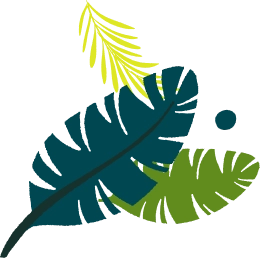


Chinatown in Ho Chi Minh City, locally known as Cho Lon, is one of the most important and amazing cultural areas within Vietnam. Spilling over from District 5 into parts of Districts 6, 10, and 11, Chinatown displays a mix of Chinese-Vietnamese history, architecture, food, and custom. Here goes the guide with all those must-see attractions, cool bits of history, and handy tips that will help you get the most out of this area.
Do note, this area can get pretty crowded in the evening so if you are someone who doesn’t like crowded places, go in early evening or afternoon!
Cho Lon, which means "big market," goes way back to the 18th century. It started off as a safe place for Chinese folks fleeing conflicts in southern Vietnam. Over the years, Cho Lon turned into a busy economic and cultural hub. These days, you can see its streets filled with a mix of Chinese and Vietnamese vibes, all shown through cool old buildings, temples, and lively markets.
Getting to Cho Lon from District 1 takes 10-20 minutes depending on traffic and your chosen transportation. Here's exactly what to expect.
Cost: 100,000 to 150,000 VND ($4 to $6 USD) depending on traffic
Time: 10-15 minutes (morning) or 15-25 minutes (evening rush)
How: Open Grab app, enter "Binh Tay Market" or "Thien Hau Pagoda"
Pro: Air-conditioned, door-to-door, safe for luggage
Con: Prices higher during 7-9 AM or 5-7 PM rush hours
Cost: 5,000 VND ($0.20 USD) per person
Time: 30-40 minutes depending on stops
Routes Available:
Bus 1: Ben Thanh Market to Cho Lon Station (most convenient)
Bus 56: Along Tran Hung Dao Boulevard
Bus 96: Connects to An Dong Market area
When: 5:30 AM to 8:30 PM
How: Wave to bus at designated stop, pay cash to conductor
Cost: 150,000 VND per day ($6 USD)
Time: 15-20 minutes if you know the way
Pro: Flexible, cheaper for full day
Con: Traffic can be chaotic, no AC
Money Saving Tip: If visiting multiple spots in District 5, rent a motorbike for the day (150,000 VND total) versus multiple Grab rides (300,000+ VND total).
Binh Tay Market is the heartbeat of Chinatown. Built in 1920 with French-Chinese architecture, it sprawls across 25,000 square meters with 2,300+ vendor stalls. Unlike Ben Thanh (tourist-focused), Binh Tay serves locals, so prices are 30-50% cheaper and the vibe is authentically Vietnamese.
Market Layout:
Outside Area: Wet market with fresh produce, meat, seafood, vegetables. This is where locals shop daily. Organized chaos with motorcycles, trolleys, and haggling.
Inside Main Building: Two stories of indoor stalls. Hundreds of vendor stall numbers (each has a number above for navigation). Ground floor: spices, dried fruits, textiles, herbs. Upper floor: household goods, wholesale items.
Food Court: Back of market on Phan Van Khoe Street. Authentic Vietnamese food: pho, spring rolls, banh bao (steamed buns), broken rice. Prices 20,000 to 40,000 VND per dish.
Best Time to Visit:
Early Morning (6-9 AM): Peak local activity, freshest produce, coolest temperature. Arrive before 8 AM to beat crowds and heat.
Mid-Morning (9-11 AM): Still good, less frantic than 6-8 AM, weather manageable.
Afternoon (2-5 PM): Hot, humid, locals shopping for dinner. Fewer tourists but uncomfortable temperature.
Evening (after 6 PM): Starts closing down, vendors packing up.
Chinatown has 10+ temples and pagodas reflecting Chinese-Vietnamese cultural fusion. Here are the must-see ones.
Dedication: Goddess Mazu (Goddess of the Sea)
Built: 1760 (over 260 years old)
Architecture: Traditional Chinese with Vietnamese elements, ornate wooden carvings, hanging incense coils
What to See: Intricate ceiling carvings, ceramic dioramas depicting Chinese mythology, red lanterns, burning joss sticks
Cost: Free
Time Needed: 20-30 minutes
Pro Tip: Go early morning when quieter. Respectfully observe worshippers. Dress modestly (cover shoulders/knees).
Dedication: Goddess of Mercy (Avalokitesvara)
Built: 19th century
Architecture: Arched entrance, mix of Buddhist and Taoist elements
Interior: Colorful statues, decorations, spiritual atmosphere
Cost: Free
Time Needed: 15-20 minutes
Dedication: God of Wealth and Prosperity
Significance: Frequented by business owners seeking good fortune
Architecture: Ornate dragon decorations, red and gold colors
Best For: Understanding local spiritual practices
Age: Over 200 years old
Architecture: Traditional Chinese pagoda style
Cultural Significance: Community gathering space
Art: Ancient wooden carvings, Chinese calligraphy
Temple Etiquette: Remove shoes before entering some areas, Dress modestly (cover shoulders and knees), Ask permission before photographing, Observe silently during prayers, Small donations appreciated (10,000 VND recommended).
This is a hidden treasure...a very vibrantly colored alley with century-old residences, a mixture of French and Chinese architectural style, and apt for photography lovers. You might just find that viral instagram shot here!
6:30 AM: Arrive at Binh Tay Market
7:00-8:00 AM: Explore outdoor wet market, photograph vendors, grab breakfast
8:00-8:30 AM: Explore indoor market stalls, buy souvenirs
8:45 AM: Leave for Thien Hau Pagoda
9:00 AM: Thien Hau Pagoda visit (20-30 minutes)
9:45 AM: Walk to Quan Am Pagoda (5-10 minute walk)
10:00-10:20 AM: Quan Am Pagoda
10:30 AM: Explore Hao Si Phuong Alley (colorful photogenic alley)
11:00 AM: Coffee break at traditional Vietnamese cafe
11:30 AM-12:30 PM: Authentic dim sum or Chinese-Vietnamese lunch at local restaurant
Binh Tay Market - Thien Hau Pagoda (walking distance) - Quan Am Pagoda - Hao Si Phuong Alley - Lunch destination
Time per location: 30-45 minutes each
Total Time: 3-4 hours
Foodies dream of Chinatown as it serves awesome Vietnamese and Chinese dishes. Some of the favorite ones include:
Roasted Duck and Pork: Found in many street-side stalls.
Fish Noodle Soup: Flavorful and comforting in a bowl full of rich broth.
Dumplings and Wontons: Perfect for a quick snack.
Sweet Desserts (Che): Light desserts made from lotus seeds, mung beans, or tofu.
For a coffee break, try Ba Lu Coffee (google maps link), an old café famous for roasting the traditional way. The coffee is pretty strong so try it in the morning or early afternoon if you value your sleep, trust us
Besides Binh Tay Market, check out:
Soai Kinh Lam Market: Excellent for textiles and fabrics.
Lantern Street: Famous for its colorful decorations, especially during the Mid-Autumn Festival.
It reflects everything Chinese: the temples, the languages, the festivals. The cool traditional festivals that occur are the Lunar New Year (Tết) and the Lantern Festival—they light the streets up with lion dances, firecrackers, and bright-colored decorations.
If you’ve got some extra time, check out nearby spots like the Saigon Central Post Office or Notre Dame Cathedral in District 1 for a taste of history. You definitely can’t miss the Independence Palace either!
Q1: Where exactly is Chinatown Ho Chi Minh?
District 5, western Ho Chi Minh City. Bordered by Tran Hung Dao Boulevard (north) and Saigon River (south). Also extends into parts of Districts 6, 10, 11.
Q2: Is Chinatown safe for tourists?
Yes, very safe. Heavy local presence means good security. Pickpocketing rare. Common sense rules apply (watch bags in crowded areas, avoid late night alone).
Q3: What's the best time to visit?
Early morning (6-9 AM) for authentic local experience and cooler weather. Late afternoon (4-6 PM) for sunset photos. Avoid midday heat (11 AM-3 PM).
Q4: How much money should I bring?
100,000 VND ($4 USD) minimum. Budget: 200,000-300,000 VND ($8-12) for food + shopping + transportation.
Q5: Can I haggle/negotiate prices?
At Binh Tay Market (local market): Rarely. Prices already wholesale. Some negotiation possible for bulk purchases.
Q6: How long should I spend in Chinatown?
3-4 hours minimum (quick visit), 5-6 hours ideal (temples + market + food + photos).
Q7: What food should I try?
Dim sum (various steamed dumplings), Fish noodle soup (bánh canh cá), Wonton soup, Roasted duck/pork, Banh bao (steamed buns). Cost: 30,000-70,000 VND per dish.
Q8: Is English spoken?
Limited English. Basic phrases helpful. Grab app helps with addresses. Street vendors mostly Vietnamese-speaking only.
Q9: What should I wear?
Lightweight, breathable clothing (hot/humid), comfortable walking shoes (15,000+ steps typical), hat/cap (sun protection), light scarf (sun + temple dress code).
Q10: Can I take photos?
Yes, freely outside. Inside temples ask permission first. Photography generally welcomed (they understand tourists).
Q11: Is there a Chinatown map available?
Google Maps covers main areas. Binh Tay Market has directory numbers (1400+ stalls) but can be confusing. Walking app (Maps.me) helps offline.
Q12: How does Chinatown compare to Ben Thanh Market?
Ben Thanh: Touristy, central, expensive, sanitized. Chinatown: Local, authentic, cheap, chaotic but real. Choose Chinatown for authenticity.
Get the latest information about our tours and special offers!